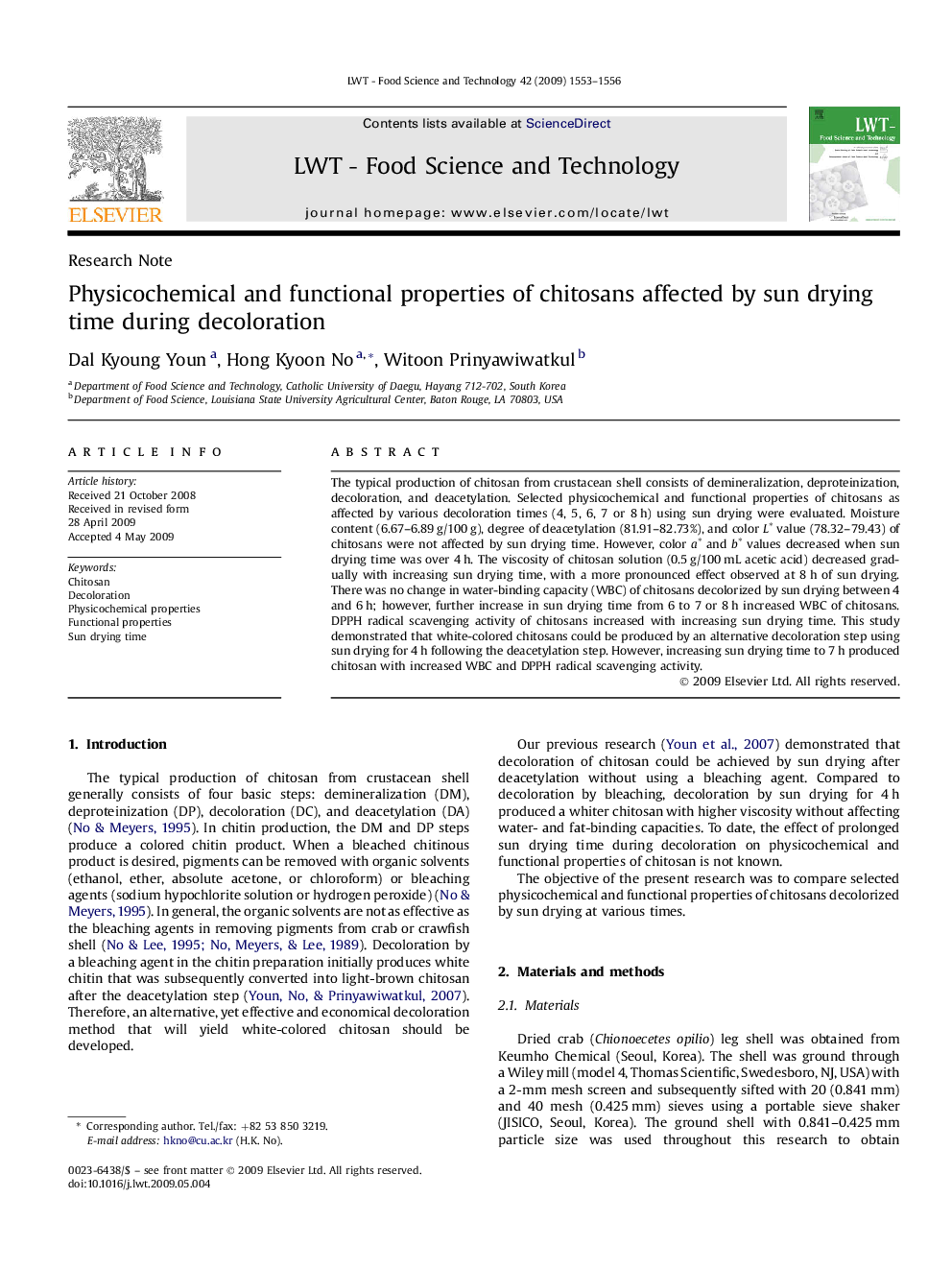| Article ID | Journal | Published Year | Pages | File Type |
|---|---|---|---|---|
| 4564767 | LWT - Food Science and Technology | 2009 | 4 Pages |
The typical production of chitosan from crustacean shell consists of demineralization, deproteinization, decoloration, and deacetylation. Selected physicochemical and functional properties of chitosans as affected by various decoloration times (4, 5, 6, 7 or 8 h) using sun drying were evaluated. Moisture content (6.67–6.89 g/100 g), degree of deacetylation (81.91–82.73%), and color L∗ value (78.32–79.43) of chitosans were not affected by sun drying time. However, color a∗ and b∗ values decreased when sun drying time was over 4 h. The viscosity of chitosan solution (0.5 g/100 mL acetic acid) decreased gradually with increasing sun drying time, with a more pronounced effect observed at 8 h of sun drying. There was no change in water-binding capacity (WBC) of chitosans decolorized by sun drying between 4 and 6 h; however, further increase in sun drying time from 6 to 7 or 8 h increased WBC of chitosans. DPPH radical scavenging activity of chitosans increased with increasing sun drying time. This study demonstrated that white-colored chitosans could be produced by an alternative decoloration step using sun drying for 4 h following the deacetylation step. However, increasing sun drying time to 7 h produced chitosan with increased WBC and DPPH radical scavenging activity.
